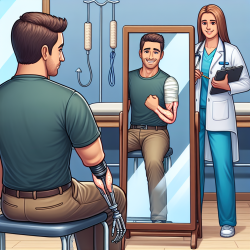Creating a Dynamic School Culture: One Virtual Session at a Time
Ah, school culture. It's the elusive unicorn that every school is trying to catch. A place where students are engaged, teachers are inspired, and school social workers like you are, well, not pulling your hair out. While there are many elements that contribute to a thriving school culture, today we’re going to talk about one that might not be on the tip of your tongue: speech therapy telepractice.
The Role of Speech Therapy in School Culture
Let’s be real, speech therapy isn’t just about correcting those adorable lisps or helping students say "spaghetti" instead of "pasghetti." It's about communication, and communication is the backbone of any successful school culture. When students can express themselves clearly, they’re more likely to engage in class, build friendships, and feel a sense of belonging.
Why Telepractice?
Enter speech therapy telepractice, the virtual hero of the modern educational landscape. In the era of digital transformation, why not embrace the convenience and effectiveness of online therapy? Not only does it save time and resources, but it also ensures that no child is left behind, regardless of geographical constraints.
Data-Driven Success
Let’s talk data, because who doesn’t love a good statistic? Studies have shown that telepractice is just as effective as face-to-face sessions. According to a 2020 study published in the Journal of Telemedicine and Telecare, students receiving telepractice services made similar progress in their IEP goals compared to their peers in traditional settings. Now, that’s what I call a win-win!
Adding Humor to Therapy Sessions
Humor is an underappreciated tool in therapy. It’s like the secret sauce that makes everything better. Our therapists at TinyEYE are not just skilled in speech therapy; they’re also experts in making sessions engaging and fun. After all, laughter is the best medicine, right?
How School Social Workers Can Get Involved
As a school social worker, you play a pivotal role in shaping school culture. By collaborating with speech therapists, you can help identify students who might benefit from telepractice. Here’s how you can get involved:
- Participate in IEP meetings to advocate for telepractice services.
- Work closely with teachers to identify students who may need support.
- Encourage parents to consider telepractice as a viable option.
Conclusion: The Bigger Picture
In the grand scheme of things, speech therapy telepractice is more than just a service; it's a movement towards a more inclusive and supportive school environment. By integrating this into your school culture, you’re not just helping students with their speech; you’re giving them a voice.
So, the next time you find yourself in a meeting about school culture, why not throw in a little telepractice talk? Who knows, it might just be the missing piece to your school’s cultural puzzle.










